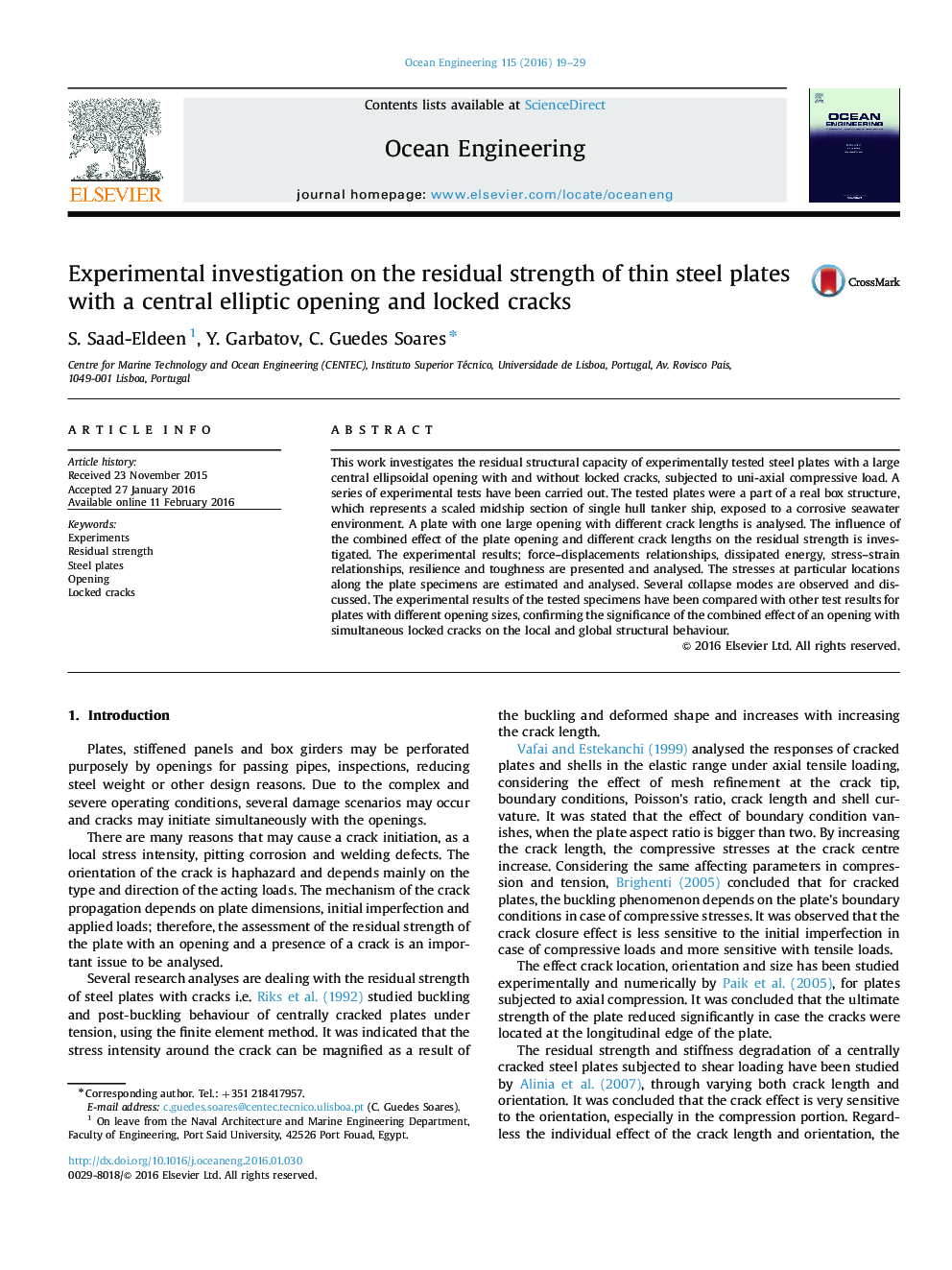| Article ID | Journal | Published Year | Pages | File Type |
|---|---|---|---|---|
| 1725188 | Ocean Engineering | 2016 | 11 Pages |
•The residual capacity of steel plates with an opening and cracks is tested experimentally.•The tested plates were a part of a real box structure exposed to corrosive seawater.•A plate with one large opening with different crack lengths is analyzed.•The combined effect of the plate opening and different locked crack is investigated.•The results confirmed the significant effect of the opening with simultaneous cracks.
This work investigates the residual structural capacity of experimentally tested steel plates with a large central ellipsoidal opening with and without locked cracks, subjected to uni-axial compressive load. A series of experimental tests have been carried out. The tested plates were a part of a real box structure, which represents a scaled midship section of single hull tanker ship, exposed to a corrosive seawater environment. A plate with one large opening with different crack lengths is analysed. The influence of the combined effect of the plate opening and different crack lengths on the residual strength is investigated. The experimental results; force–displacements relationships, dissipated energy, stress–strain relationships, resilience and toughness are presented and analysed. The stresses at particular locations along the plate specimens are estimated and analysed. Several collapse modes are observed and discussed. The experimental results of the tested specimens have been compared with other test results for plates with different opening sizes, confirming the significance of the combined effect of an opening with simultaneous locked cracks on the local and global structural behaviour.
